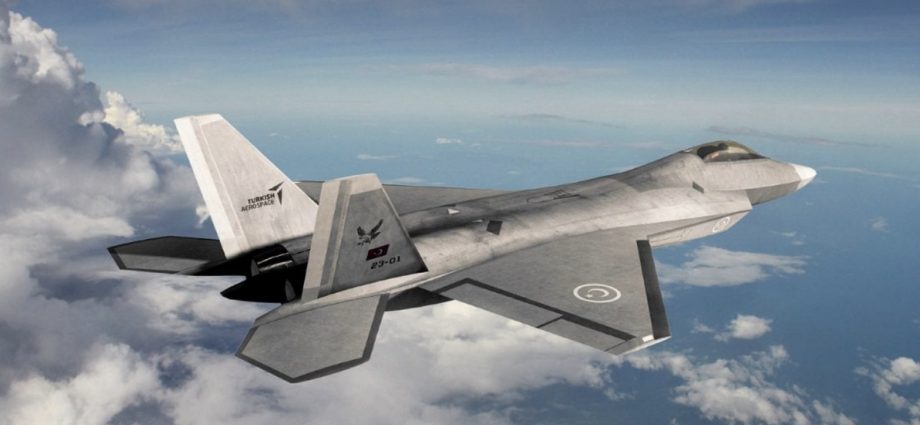Russia plans to invite India to join its beleaguered Su-75 5th generation stealth fighter project, whose development appears to be challenged by multiple factors.
This month, Russian state media outlet TASS reported that the Russian delegation attending the 2023 Aero India International Airshow from February 13-17 plans to discuss potential cooperation with India in developing the former’s Su-75 Checkmate 5th fighter jet.
“A delegation of representatives of our aircraft-building companies will attend the Aero India air show. We plan to discuss cooperation in fifth-generation aircraft. In particular, there is the intention to invite our Indian partners to join the Checkmate light tactical fighter project,” said a source close to Russian state tech corporation Rostec quoted by TASS.
The TASS report notes that the Su-75 was designed as an export product, with an open systems architecture that allows it to meet diverse customer requirements.
The report notes that the Su-75 is a single-engine light fighter featuring an internal weapons bay, has a seven-ton payload, and can strike six targets simultaneously. It also states that it can fly at Mach 1.8, has an operating range of 3,000 kilometers and that a pilot batch of the fighter is expected to be produced in 2026.
It is not the first time that Russia has offered co-production of its Su-75 fighter. In January 2022, Asia Times reported on Russia’s plans to co-produce its Su-75 with the UAE, a bid to coax the emirate from acquiring US-made F-35s.

Previously, the UAE decided to suspend talks with the US over F-35s due to US pressure on the UAE to cut China’s Huawei from its telecommunications network.
Despite the disagreement, Jon Lake mentions in a February 2022 article for Times Aerospace that the UAE is still making progress in its plans to acquire F-35s from the US, with the UAE’s recognition of Israel in May 2021 giving a political incentive for the US to authorize the sale.
However, in a January 2023 article in 1945, Maya Carlin mentions that the UAE has paused its involvement in developing the Su-75, which apparently removes a critical funding source for the program.
Carlin notes that this decision may be due to multiple issues hounding Russia’s defense industry, such as a lack of precision machining tools, advanced semiconductors and Western sanctions.
Russia may thus be counting on India’s longstanding dependence on Russian-made weapons to keep its Su-75 project viable, particularly at a time India feels the need to counter rival Pakistan’s fast-improving air force through China’s support.
In January 2022, Asia Times reported Pakistan’s announcement to acquire 36 Chinese J-10 fighter jets to counter India’s French-made Rafale fighters. The J-10 is billed as China’s answer to the US F-16 and Swedish Gripen. It is powered by a Russian AL-31F engine and is considered competitive against non-5th generation aerial threats while still being cheaper than competing types.
In February 2022, Asia Times reported on Pakistan and Turkey’s partnership to jointly develop a 5th generation fighter to replace their aging F-16 fleets. The TF-X type is a twin-engine multirole aircraft focused on air-to-air combat but will also have air-to-ground roles.
Moreover, in December 2022, Asia Times reported that the TF-X is currently in an early stage of production, with Turkish Aerospace Industries (TAI) showing video footage of the aircraft under construction.

The video shows a twin-engine fuselage and wings, but its engines and avionics remain out of view. The TF-X prototype is expected to be unveiled in March 2023, with the first test flight in 2025 or 2026 and the type entering service in 2028 or the 2030s.
The TF-X is expected to keep Turkey’s aerospace industry afloat after the country’s expulsion from the F-35 program in 2019, contribute to the country’s strategic independence and generate export sales, with Pakistan being a potential customer.
Asia Times also reported that in September 2022 the US authorized a US$450 million upgrade package for Pakistan’s F-16 fleet, including earmarks for contractor engineering, technical assistance, logistics services, engine and hardware modifications and support, unclassified software and other software support.
Although India has taken steps to address the evolving challenge of Pakistan’s airpower, it is still being determined what role Russia will play in these moves.
This month, Defense Mirror noted that in March 2022 India placed an order for 12 Su-30MKI fighters from Russia. Two months later, however, India suspended its order due to concerns about Russia’s ability to deliver parts and payment issues.
In addition, Defense Mirror notes that India is considering upgrading its existing Su-30MKI fleet with indigenous technology and weapons instead of acquiring more Su-30MKIs.
Furthermore, The Hindu reported in July last year that France delivered 36 Rafale jets to India, with all units slated to be upgraded soon with 13 India-Specific Enhancements (13 ISE). The Hindu also notes that the Rafale-M naval variant is a contender for India’s carrier-based fighter acquisition program, competing against the US F/A-18 Super Hornet.

Asia Times reported in March 2022 that India has started manufacturing its 5th generation Advanced Medium Combat Aircraft fighter jet, a multirole combat aircraft designed for air dominance, ground strikes, suppression of enemy air defenses (SEAD) and deep strikes in enemy airspace.
The AMCA is planned to be produced in two variants, with the AMCA Mark 1 powered by a pair of US General Electric F414-INS6 turbofan engines and the AMCA Mark 2 powered by an indigenous engine co-produced by India’s Defense Research and Development Organization (DRDO) and French aerospace firm Safran.
Given all that, it is still being determined if Russia can successfully convince India to get on board its Su-75 project, whether Russia can still rely on India as a captured market for its aerospace industry and if it can instead find alternative partners willing to invest in the troubled project.

